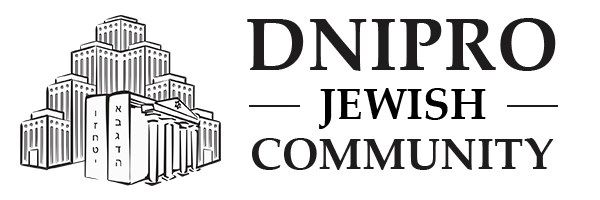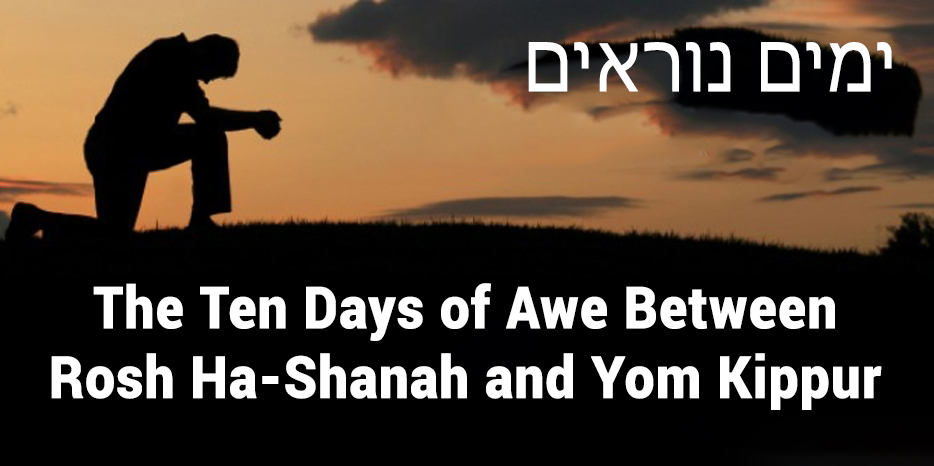Very soon – in less than a week, on the evening of October 1st – the most important day of the year, the Day of Atonement, Yom Kippur, will begin. The judgment over each individual, which began on Rosh Ha-Shanah, will be concluded on Yom Kippur, and the final verdict depends significantly on us. Why did the Creator of the world allot us these 10 days between these two dates? How should we prepare for Yom Kippur, and what is the meaning of its key moments and prayers? Our website has prepared a series of publications on this topic, the first of which we present to our readers.
The period between Rosh Ha-Shanah and Yom Kippur is called Yamim Nora’im or the Days of Awe. This is a unique period of the year, fundamentally different from all others. Why are these days called the Days of Awe, what is their spiritual significance, and how do they differ from other days?
The first ten days of the month of Tishrei, the “Days of Awe,” have another name – the Ten Days of Repentance (Aseret Yemei Teshuvah). The first name indicates that, starting from Rosh Ha-Shanah, when the Heavenly Court issues a decree for every living being on earth, and concluding with Yom Kippur, when this decree is sealed, the entire world is filled with awe of the Almighty. The second name indicates that these ten days are the most opportune time for repentance in the entire year. The prophet says: “Seek the Lord while He may be found; call upon Him while He is near. Let the wicked forsake his way, and the unrighteous man his thoughts; and let him return to the Lord, and He will have compassion on him, and to our God, for He will abundantly pardon” (Isaiah 55:6-7).
Our sages explain that this refers specifically to the Ten Days of Repentance: during these days, the Almighty, as it were, descends to us, making Himself especially close and accessible.
Therefore, each of us during these days is obligated to once again analyze our behavior, take stock of our actions, and perform teshuvah (repentance).
One might ask: but the entire month of Elul is designated for repentance, is the teshuvah before Rosh Ha-Shanah not enough? This question can be answered with another question: why do we read Tachanun after the Shemoneh Esrei – after all, it would seem that confession of sins should precede this prayer, when we stand as if before the face of the Almighty? The answer to both questions is the same: just as after washing, stains remain on a white tablecloth (which were not visible while the tablecloth was dirty), so too only after the teshuvah of Elul does a person become aware of their true sins, which have penetrated so deeply into their soul that they were unnoticed.
A hint that hidden evil in the soul is much more dangerous than the obvious is found in one of the laws of the Torah. A person who has become aware of their sin brings a sin offering (chatat) depending on their financial means: a wealthy person brings a sheep or goat, a poor person brings a measure of flour. However, if a person is uncertain whether they committed a sin and wishes to relieve their doubt by bringing a guilt offering (asham), then regardless of whether the person is poor or rich, they are obligated to bring a ram as a sacrifice, the cost of which is quite high (Leviticus 4:27 – 5:19). The Torah thereby indicates that performing teshuvah, knowing one’s transgressions, is easier than overcoming a bad habit, perhaps already a second nature, and repenting for sins that have managed to take root in the soul. This is precisely what is required of us during the Ten Days of Repentance.
Rabbi Yitzchak Luria Ashkenazi (the Arizal) revealed to his students that the seven days between Rosh Ha-Shanah and Yom Kippur provide us with a unique opportunity for teshuvah for the entire past year. Specifically: on the first of these seven days, one should perform teshuvah, pleading for forgiveness for all sins committed on the first day of all the weeks of the year; on the second day – for all sins committed on the second day of all the weeks, and so on.
The great 16th-century Kabbalist Rabbi Moshe Cordovero writes that during the Ten Days of Repentance, one should only do the most necessary work, as on Chol HaMoed (the intermediate days of a festival), and dedicate as much time as possible to Torah study, prayer, and good deeds.
Special attention must be paid to improving one’s relationships with other people. It is stated in the Talmud that Yom Kippur atones only for sins between a person and God. Sins between a person and their fellow are not atoned for by Yom Kippur unless the offender has received forgiveness from the offended.
Merely compensating for a loss caused to someone is not enough – one must also obtain forgiveness from the victim.
It is recommended during these days to be more stringent in observing those details of Torah law where Halacha sometimes permits leniencies. For example, someone who eats bread baked by a non-Jewish baker throughout the year should, during the Ten Days of Repentance, eat only bread baked by a Jew.
The logic is simple: for in these days we ask the Almighty to do more for us than we deserve – so we too should do for the Almighty more than the strict letter of the law requires.
The Slichot prayers for the Fast of Gedalia are not found in the regular prayer book (siddur), like the Slichot for other fasts, but in the special Slichot collection read before Rosh Ha-Shanah. Since on the Fast of Gedalia, Slichot are read not before the Shacharit prayer but in the middle of it – during Tachanun – the part analogous to the pre-Rosh Ha-Shanah Slichot is omitted, and only those parts analogous to the corresponding sections of the Slichot for other fasts are read. Specifically, they do not read Ashrei, the entire section after the first Kaddish (quotations from the Tanakh about God’s greatness and mercy), Slach Lanu, the piyut Az Terem, El Erech Apayim, the confession of sins (Ashamnu), the 6th chapter of Psalms with its introduction (Vayomer David…). At the conclusion of Tachanun, the full text of Avinu Malkeinu is read with some modifications specific to the Ten Days of Repentance, after which the chazzan recites Chatzi Kaddish (and not Kaddish Shalem, as in the Slichot before Rosh Ha-Shanah). One who wishes to perform commandments as meticulously as possible already during the Ten Days of Repentance purchases an etrog, lulav, and hadas for the Arba’at HaMinim (Four Species), so that before Yom Kippur they gain an additional merit – preparation for fulfilling this important commandment. On all days between Rosh Ha-Shanah and Yom Kippur, during Shacharit and Mincha, the full text of Avinu Malkeinu is read at the conclusion of Tachanun before the open Ark, except for Mincha on Friday and prayers on Shabbat (Shabbat Teshuvah) and the eve of Yom Kippur (since Avinu Malkeinu is not recited on days when Tachanun is not said).
The Shabbat between Rosh Ha-Shanah and Yom Kippur has two names. The first – Shabbat Shuvah – it receives from the first words of the Haftarah portion read on that day: Shuvah Yisrael! (“Return, O Israel!”) (Hosea 14:2). The second – Shabbat Teshuvah, because this Shabbat is one of the Ten Days of Repentance. The second name hints that although on Shabbat we do not recite prayers mentioning our sins, nevertheless, on this Shabbat, it is necessary to perform teshuvah, but a special kind, “Shabbat teshuvah,” i.e., to strive to ascend to a higher spiritual level not from the abyss of sin, but already within the realm of holiness.
There is a custom to light a special candle before the onset of Shabbat Teshuvah that burns for a full twenty-four hours – so that the “light of teshuvah” may shine upon us.
For the reading of the Haftarah on Shabbat Teshuvah, the most respected person in the community is called up. During Mincha, Tzidkat’cha is read, even if the next day is the eve of Yom Kippur. At the conclusion of this Shabbat, Vihi Noam etc. are not recited, except when Yom Kippur coincides with the following Shabbat.
It is not customary to perform the Sanctification of the Moon (Kiddush Levanah) until after Yom Kippur concludes – unless the weather raises concerns that it will not be possible to do so on the night after Yom Kippur.




